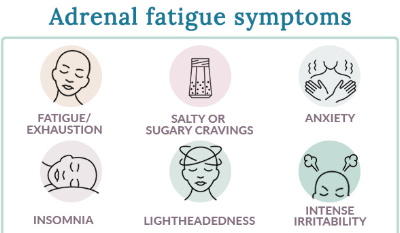Fibromyalgia is widely recognized as a chronic pain disorder that affects the musculoskeletal system, nervous system, and overall well-being. While its root cause remains unknown, recent research suggests that fibromyalgia may not only be triggered by underlying conditions but may also contribute to the development of other illnesses.
Many fibromyalgia patients report that their condition leads to a cascade of health complications, ranging from autoimmune diseases and cardiovascular issues to neurological disorders and metabolic imbalances.
This article explores whether fibromyalgia itself can cause other illnesses, the possible biological mechanisms behind these connections, and how managing fibromyalgia may prevent further health deterioration.
Can Fibromyalgia Trigger Other Illnesses?
For years, fibromyalgia was believed to be a standalone condition that resulted from an overactive nervous system and heightened pain perception. However, emerging research suggests that fibromyalgia could lead to or worsen other medical conditions, including:
- Autoimmune disorders
- Neurological conditions
- Cardiovascular diseases
- Metabolic disorders
- Mental health conditions
Let’s explore how fibromyalgia may be linked to these illnesses.
1. Autoimmune Diseases and Fibromyalgia
Autoimmune diseases occur when the body’s immune system mistakenly attacks healthy tissues, leading to chronic inflammation and organ damage. While fibromyalgia itself is not classified as an autoimmune disorder, research suggests that it may increase the risk of developing autoimmune conditions such as:
- Rheumatoid arthritis (RA) – Fibromyalgia may cause prolonged inflammatory stress, which could trigger autoimmune responses. Many fibromyalgia patients eventually develop RA-like symptoms, including joint pain and swelling.
- Lupus (SLE) – Some researchers believe that the systemic inflammation in fibromyalgia may increase susceptibility to lupus, an autoimmune disease that affects multiple organs.
- Hashimoto’s thyroiditis – This autoimmune condition attacks the thyroid gland, leading to hormonal imbalances that can worsen fibromyalgia symptoms like fatigue and depression.
How Fibromyalgia May Lead to Autoimmune Disorders
- Chronic stress and inflammation may weaken the immune system.
- Dysregulated nervous system activity may trigger immune overreactions.
- Gut microbiome imbalances (common in fibromyalgia patients) may contribute to autoimmune dysfunction.
2. Neurological Disorders Linked to Fibromyalgia
Fibromyalgia is known to affect the central nervous system (CNS), which controls pain perception, cognition, and nerve function. Over time, this dysfunction may contribute to neurological diseases, including:
- Multiple sclerosis (MS) – Some studies suggest that fibromyalgia patients are at an increased risk of developing MS, a condition where the immune system attacks the protective covering of nerves (myelin).
- Peripheral neuropathy – Many fibromyalgia patients experience burning, tingling, or numbness in their extremities, which may indicate nerve damage.
- Migraine and chronic headaches – Fibromyalgia-related nerve hypersensitivity can lead to frequent migraines and tension headaches.
How Fibromyalgia May Lead to Neurological Disorders
- Neuroinflammation – Chronic pain may trigger long-term inflammation in the brain and nerves.
- Dysregulated neurotransmitters – Fibromyalgia alters levels of serotonin, dopamine, and norepinephrine, which affects nerve function and brain health.
- Mitochondrial dysfunction – Impaired energy production in nerve cells may lead to nerve damage and brain fog.
3. Cardiovascular Diseases and Fibromyalgia
Studies have shown that fibromyalgia may increase the risk of heart disease by affecting the autonomic nervous system, which regulates heart function. Fibromyalgia patients have been linked to:
- High blood pressure (hypertension) – Chronic stress and pain may contribute to elevated blood pressure levels.
- Heart palpitations and arrhythmias – Fibromyalgia’s effect on the nervous system can cause irregular heartbeats.
- Increased risk of heart attack – Some research suggests that fibromyalgia patients have a higher risk of cardiovascular events due to chronic inflammation and poor circulation.
How Fibromyalgia May Lead to Cardiovascular Diseases
- Autonomic nervous system dysfunction may cause irregular heart function.
- Chronic pain and stress increase cortisol levels, which negatively impacts heart health.
- Reduced physical activity due to pain may lead to weakened heart muscles and poor circulation.
4. Metabolic Disorders and Fibromyalgia
Fibromyalgia is commonly associated with metabolic imbalances that can contribute to the development of chronic conditions, including:
- Type 2 diabetes – Many fibromyalgia patients experience insulin resistance, making them more susceptible to diabetes.
- Obesity – Chronic fatigue and pain often lead to reduced physical activity, increasing the risk of weight gain.
- Hormonal imbalances – Fibromyalgia affects the hypothalamic-pituitary-adrenal (HPA) axis, which regulates hormone levels related to metabolism and energy production.
How Fibromyalgia May Lead to Metabolic Disorders
- Mitochondrial dysfunction can reduce the body’s ability to process glucose efficiently.
- Chronic inflammation affects insulin regulation, increasing the risk of diabetes.
- Hormonal disruptions can slow metabolism, leading to weight gain and fatigue.
5. Mental Health Conditions and Fibromyalgia
Fibromyalgia is strongly associated with depression, anxiety, and mood disorders, which may worsen over time.
- Chronic pain can lead to depression, as patients struggle with daily discomfort.
- Sleep disturbances contribute to anxiety and mood swings, affecting mental stability.
- Neurotransmitter imbalances in serotonin and dopamine affect both pain perception and emotional regulation.
How Fibromyalgia May Lead to Mental Health Disorders
- Chronic stress alters brain chemistry, leading to depression and anxiety.
- Pain-related sleep disturbances increase the risk of mood disorders.
- Emotional distress from persistent pain can create a cycle of mental health struggles.
Can Managing Fibromyalgia Prevent Other Illnesses?
If fibromyalgia can trigger other diseases, proper management may help prevent further health complications. Here are some ways to reduce fibromyalgia’s impact:
1. Reducing Inflammation
- Adopt an anti-inflammatory diet rich in omega-3s, leafy greens, and antioxidants.
- Avoid processed foods, sugar, and artificial additives.
2. Supporting the Nervous System
- Practice stress reduction techniques like yoga, meditation, or deep breathing exercises.
- Consider acupuncture or nerve-stimulating therapies to improve function.
3. Improving Sleep Quality
- Maintain a consistent sleep schedule to support brain and body recovery.
- Use natural sleep aids like melatonin or magnesium.
4. Addressing Hormonal and Metabolic Imbalances
- Get regular thyroid and blood sugar tests to monitor metabolic health.
- Consider natural supplements to regulate hormonal imbalances.
Conclusion: Does Fibromyalgia Cause Other Illnesses?
While fibromyalgia itself is not classified as a progressive disease, it may increase the risk of developing other conditions due to its impact on the immune, nervous, and metabolic systems.
Understanding the potential complications of fibromyalgia can help patients and healthcare providers take proactive steps to prevent additional illnesses and improve overall well-being.
If you are experiencing new or worsening symptoms, it may be beneficial to discuss comprehensive testing and treatment options with your doctor.

Click Here to Visit the Store and find Much More….
For More Information Related to Fibromyalgia Visit below sites:
References:
Fibromyalgia Contact Us Directly
Click here to Contact us Directly on Inbox
Official Fibromyalgia Blogs
Click here to Get the latest Chronic illness Updates
Fibromyalgia Stores




